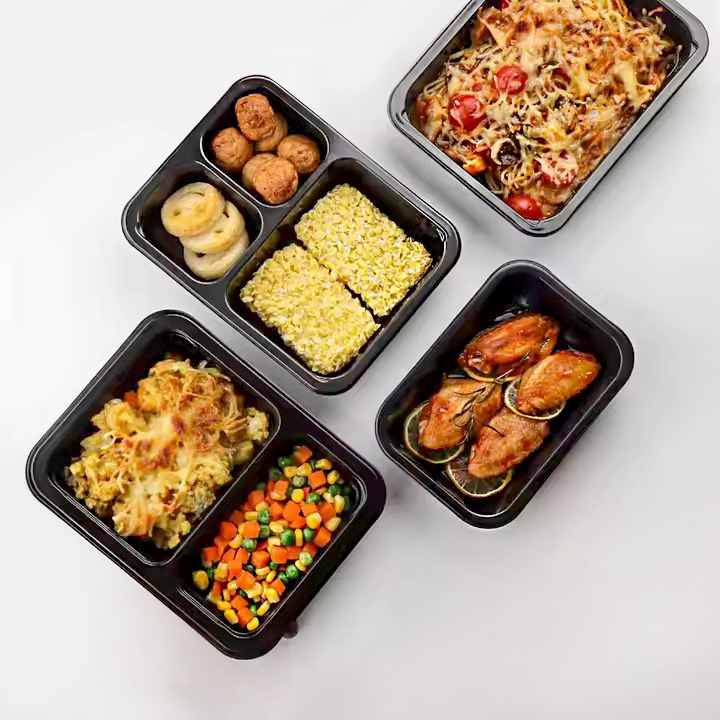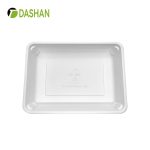🌍 Introduction
The airline catering industry is under pressure to cut costs, reduce waste, and enhance passenger experience. Traditional aluminum trays—once the standard—are no longer ideal due to high damage rates, sustainability concerns, and limited branding options. Enter CPET Airline Trays, a solution that combines durability, functionality, and eco-friendly advantages.
In this article, we dive into:
✔ What makes CPET Airline Trays unique
✔ Two real airline case studies
✔ Cost analysis comparing CPET with aluminum
✔ Industry trends and sustainability data
✔ FAQs, references, and SEO structure

📦 What Is a CPET Airline Tray?
CPET (Crystallized Polyethylene Terephthalate) is a high-performance thermoplastic used in airline catering trays.
Key Features:
✔ Temperature Range: -40°C (freezer) to +220°C (oven)
✔ Food Safety: BPA-free, FDA and EU 10/2011 compliant
✔ 100% Recyclable: Supports airline sustainability programs
✔ Strength: Crack-resistant under storage and transport pressure
✔ Customizable: Airlines can add branding, compartments, and colors
✅ Case Study 1: Leading Asian Airline Adopts CPET Airline Trays
🔍 Background
The airline faced:
- High tray damage costs from aluminum bending during transport
- Inefficient reheating, requiring food transfer to oven-safe containers
- Growing sustainability commitments from government and passengers
🚀 The Solution
Partnering with Xiamen Dashan, the airline adopted custom CPET Airline Trays:
- Multi-compartment designs for portion control
- Branded embossing for a premium passenger feel
- Oven-to-table compatibility—no repacking required
📈 Results
✔ 35% reduction in tray breakage costs
✔ 25% lower catering waste in six months
✔ Faster service: Eliminated two handling steps in the galley
✔ Positive passenger feedback on food presentation

✅ Case Study 2: European Low-Cost Carrier Goes Green
🔍 Background
This carrier needed a lightweight, recyclable solution to reduce fuel consumption and comply with EU sustainability goals.
🚀 The Solution
Adoption of CPET trays with thinner walls reduced weight without compromising strength.
📈 Results
✔ Fuel Savings: Estimated 200 kg less weight per flight → $120,000 annual savings
✔ Improved brand reputation for sustainability
✔ Increased recycling compliance, aligning with EU Green Deal targets
💰 Cost Analysis: CPET vs Aluminum Trays
| Parameter | Aluminum Tray | CPET Tray |
|---|---|---|
| Average Unit Cost | $0.12 | $0.15 |
| Damage Rate | 20% | 5% |
| Handling Steps | 3 | 1 |
| Reusability/Recycling | Limited | 100% Recyclable |
✅ Conclusion:
While CPET trays cost slightly more upfront, lower damage rates, reduced handling labor, and compliance benefits make them more cost-effective long term.
📊 Industry Trends & Sustainability Data
Chart Idea (Insert in Final Layout):
Bar Chart showing:
- 2022: 70% aluminum trays, 20% PP trays, 10% CPET
- 2025 Projection: 50% CPET trays due to sustainability targets
✔ IATA 2024 Report: Airlines reducing single-use plastics cut 30% catering waste
✔ EU Regulations: Push for recyclable and oven-safe solutions by 2026
💡 Why Airlines Are Switching to CPET Airline Trays
✔ Oven & Freezer Compatible → Simplifies operations
✔ Lighter than aluminum → Fuel cost savings
✔ Branding potential → Premium passenger experience
✔ Eco-friendly → Aligns with global airline sustainability goals

❓ FAQs About CPET Airline Trays
Q1: Can CPET trays handle extreme temperatures?
✔ Yes, from -40°C to +220°C.
Q2: Are CPET trays safe for direct food contact?
✔ 100% compliant with FDA and EU standards.
Q3: Can airlines customize CPET trays?
✔ Yes, with colors, embossing, and compartments.
✅ Conclusion
The transition to CPET Airline Trays is more than a trend—it’s a strategic move to reduce costs, improve passenger experience, and meet sustainability mandates. With global airlines leading the way, CPET trays are set to become the industry standard by 2025.





